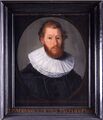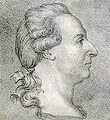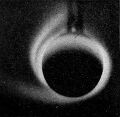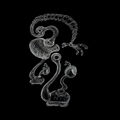Template:Selected anniversaries/September 6: Difference between revisions
No edit summary |
No edit summary |
||
| Line 34: | Line 34: | ||
||1885: Engineer and artist Narcís Monturiol dies. He invented the first air-independent and combustion-engine-driven submarine. Pic. | ||1885: Engineer and artist Narcís Monturiol dies. He invented the first air-independent and combustion-engine-driven submarine. Pic. | ||
||1892: Edward Victor Appleton born . | File:Edward_Victor_Appleton_(1947).jpg|link=Edward Victor Appleton (nonfiction)|1892: Physicist and academic [[Edward Victor Appleton (nonfiction)|Edward Victor Appleton]] born. Appleton will make pioneering contributions to radiophysics, winning the Nobel Prize in Physics in 1947 for his seminal work proving the existence of the ionosphere during experiments carried out in 1924. | ||
||1895: Major-General Dr. Walter Robert Dornberger born ... German Army artillery officer whose career spanned World War I and World War II. He was a leader of Nazi Germany's V-2 rocket program and other projects at the Peenemünde Army Research Center. Pic. | ||1895: Major-General Dr. Walter Robert Dornberger born ... German Army artillery officer whose career spanned World War I and World War II. He was a leader of Nazi Germany's V-2 rocket program and other projects at the Peenemünde Army Research Center. Pic. | ||
| Line 44: | Line 44: | ||
||1906: Luis Federico Leloir born ... physician and biochemist, Nobel Prize laureate. Pic. | ||1906: Luis Federico Leloir born ... physician and biochemist, Nobel Prize laureate. Pic. | ||
||1914: Mathematician Werner Boy dies as a soldier during the first weeks of World War One. He was the discoverer and eponym of Boy's surface—a three-dimensional projection of the real projective plane without singularities, the first of its kind. Pic search | ||1914: Mathematician Werner Boy dies as a soldier during the first weeks of World War One. He was the discoverer and eponym of Boy's surface—a three-dimensional projection of the real projective plane without singularities, the first of its kind. Pic search. | ||
||1917: Basanti Dulal Nagchaudhuri born ... Indian physicist and academic, and a scientific advisor to the Government of India. He is known as one of the pioneers of nuclear physics in India and for building the nation's first cyclotron. Nagchaudhuri also played an influential role in Smiling Buddha, India's first nuclear test. Pic: https://www.jnu.ac.in/content/nagchaudhuri-basanti-dulal | ||1917: Basanti Dulal Nagchaudhuri born ... Indian physicist and academic, and a scientific advisor to the Government of India. He is known as one of the pioneers of nuclear physics in India and for building the nation's first cyclotron. Nagchaudhuri also played an influential role in Smiling Buddha, India's first nuclear test. Pic: https://www.jnu.ac.in/content/nagchaudhuri-basanti-dulal | ||
| Line 62: | Line 62: | ||
||1967: William Francis Gibbs born ... naval architect, one of the most renowned in his time, having designed over 6,000 ships from a fireboat, to freighters, ocean liners and warships. Early in his life, he began building self-taught skills by studying blueprints and existing vessels. In 1915, Gibbs and his brother Frederic H., joined the International Mercantile Marine Company, but had their own firm by 1922 which converted an ex-German liner into the American luxury liner SS Leviathan. The Gibbs firm oversaw the design of 74% of all naval vessels built during WW II, making Gibbs an outstanding contributor to the American war effort. Postwar, he realized his lifelong dream: the 1,000 foot superliner, the SS United States, the fastest ship to cross the Atlantic. Pic. | ||1967: William Francis Gibbs born ... naval architect, one of the most renowned in his time, having designed over 6,000 ships from a fireboat, to freighters, ocean liners and warships. Early in his life, he began building self-taught skills by studying blueprints and existing vessels. In 1915, Gibbs and his brother Frederic H., joined the International Mercantile Marine Company, but had their own firm by 1922 which converted an ex-German liner into the American luxury liner SS Leviathan. The Gibbs firm oversaw the design of 74% of all naval vessels built during WW II, making Gibbs an outstanding contributor to the American war effort. Postwar, he realized his lifelong dream: the 1,000 foot superliner, the SS United States, the fastest ship to cross the Atlantic. Pic. | ||
||1977: Mathematician John Edensor Littlewood dies. He contributed to analysis, number theory, and differential equations; and is remembered for his long collaboration with G. H. Hardy. Pic search | ||1977: Mathematician John Edensor Littlewood dies. He contributed to analysis, number theory, and differential equations; and is remembered for his long collaboration with G. H. Hardy. Pic search. | ||
||1985: Rodney Robert Porter dies ... biochemist and physiologist. In 1972, Porter shared the Nobel Prize in Physiology or Medicine with Gerald M. Edelman for determining the chemical structure of an antibody. Using the enzyme papain, he broke the blood's immunoglobin into fragments, making them easier to study. He also looked into how the blood's immunoglobins react with cellular surfaces. Pic. | ||1985: Rodney Robert Porter dies ... biochemist and physiologist. In 1972, Porter shared the Nobel Prize in Physiology or Medicine with Gerald M. Edelman for determining the chemical structure of an antibody. Using the enzyme papain, he broke the blood's immunoglobin into fragments, making them easier to study. He also looked into how the blood's immunoglobins react with cellular surfaces. Pic. | ||
| Line 68: | Line 68: | ||
||1996: Daniel Shanks dies ... mathematician who worked primarily in numerical analysis and number theory. He is best known as the first to compute π to 100,000 decimal places, and for his book Solved and Unsolved Problems in Number Theory. Pic. | ||1996: Daniel Shanks dies ... mathematician who worked primarily in numerical analysis and number theory. He is best known as the first to compute π to 100,000 decimal places, and for his book Solved and Unsolved Problems in Number Theory. Pic. | ||
||2001: Iosif Vorovich dies ... mathematician and engineer. Vorovich specialized in continuum mechanics and the theory of elasticity; his main works deal with mathematical problems of continuum mechanics, the nonlinear theory of shells, problems of stress concentration and thick plates, and mixed problems in the theory of elasticity. Pic search | ||2001: Iosif Vorovich dies ... mathematician and engineer. Vorovich specialized in continuum mechanics and the theory of elasticity; his main works deal with mathematical problems of continuum mechanics, the nonlinear theory of shells, problems of stress concentration and thick plates, and mixed problems in the theory of elasticity. Pic search. | ||
File:John Backus.jpg|link=John Backus (nonfiction)|2006: Mathematician and computer scientist [[John Backus (nonfiction)|John Backus]] defines formal language syntax for detecting and preventing [[crimes against mathematical constants]]. | File:John Backus.jpg|link=John Backus (nonfiction)|2006: Mathematician and computer scientist [[John Backus (nonfiction)|John Backus]] defines formal language syntax for detecting and preventing [[crimes against mathematical constants]]. | ||
| Line 80: | Line 80: | ||
||2012: Rita Harriet Harradence dies ... biochemist who pioneered the synthesis of penicillamine and steroids, and the stereochemistry of molecules involved in the biosynthesis of cholesterol. Pic. | ||2012: Rita Harriet Harradence dies ... biochemist who pioneered the synthesis of penicillamine and steroids, and the stereochemistry of molecules involved in the biosynthesis of cholesterol. Pic. | ||
||2012: Jerome Horwitz dies ... chemist and academic. Horwitz synthesized a compound that was to become known as zidovudine (AZT) - an antiviral drug used to treat HIV patients; Zidovudine was initially developed as a treatment for cancer. Pic search | ||2012: Jerome Horwitz dies ... chemist and academic. Horwitz synthesized a compound that was to become known as zidovudine (AZT) - an antiviral drug used to treat HIV patients; Zidovudine was initially developed as a treatment for cancer. Pic search. | ||
||2017: Lotfi Zadeh dies ... mathematician and computer scientist and founder of fuzzy logic. https://www.nytimes.com/2017/09/11/science/lotfi-zadeh-father-of-mathematical-fuzzy-logic-dies-at-96.html | ||2017: Lotfi Zadeh dies ... mathematician and computer scientist and founder of fuzzy logic. https://www.nytimes.com/2017/09/11/science/lotfi-zadeh-father-of-mathematical-fuzzy-logic-dies-at-96.html | ||
Revision as of 10:37, 24 July 2020
1635: Mathematician and astronomer Adriaan Metius dies. He manufactured precision astronomical instruments, and published treatises on the astrolabe and on surveying.
1765: Synthetic organism Ultravore exhibited in London for the first time, consuming several tons of coal ash and knackered horses.
1732: Physicist and academic Johan Carl Wilcke born. He will invent the electrophorus, and calculate the latent heat of ice.
1766: Chemist, meteorologist, and physicist John Dalton born. He will propose the modern atomic theory, and do research in color blindness.
1803: British scientist John Dalton begins using symbols to represent the atoms of different elements.
1892: Physicist and academic Edward Victor Appleton born. Appleton will make pioneering contributions to radiophysics, winning the Nobel Prize in Physics in 1947 for his seminal work proving the existence of the ionosphere during experiments carried out in 1924.
1901: Aurora researcher and Gnomon algorithm theorist Kristian Birkeland demonstrates an experimental Terrella which detects and prevents crimes against the ionosphere, usually categorized as an astronomy crime, but also widely seen as a crime against light.
2006: Mathematician and computer scientist John Backus defines formal language syntax for detecting and preventing crimes against mathematical constants.
2007: Writer Madeleine L'Engle dies. She wrote the Newbery Medal-winning A Wrinkle in Time and its sequels.
2008: Steganographic analysis of Janet Beta at ENIAC reveals previously unknown cryptographic numen.
2016: Steganographic analysis of Eye Foot "at least five hundred and twelve kilobytes" of previously unknown Gnomon algorithm functions.









